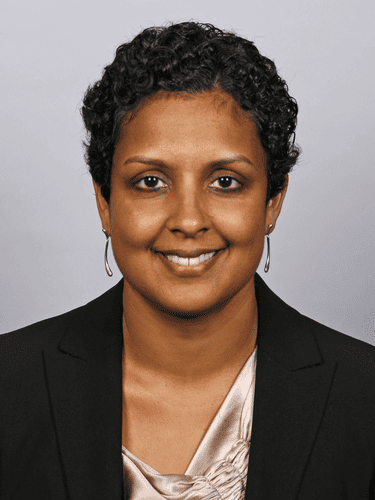Changes in technology, regulation and the distribution of wealth are reshaping private banking throughout the Americas.

When Global Finance caught up with Tracey Warson, who heads ultra-high-net-worth services in North America for Citi Private Bank, she was catching a flight from New York, America’s financial capital, to San Francisco, where technology dominates. That’s an apt symbol for her industry.
Private banking in the Americas has been able to coast a bit over the past few years on its rich history, as bullish financial markets raised assets under management. AUM at Citi jumped 15% in its last reporting year, 2016. Not only are the native rich getting richer, but as any real estate broker in New York or Vancouver knows, those whose wealth is being rapidly created in other regions seek safety and opportunity in North America.

In South America, private banks are rising to their traditional role of safeguarding assets from tough times and turmoil. Assets at Brazil’s Bank Itaú jumped 13% and profit 47% in the last reporting year, even as the country struggled with recession, presidential impeachment and occasional politically motivated street fighting. The role of Caribbean offshore zones is expanding, to judge by the Panama and Paradise papers, whose publication embarrassed prominent clients from Iceland to New Zealand. The revelations paid a backhanded compliment to the island havens’ rising global profile, as secrecy erodes in Switzerland and other traditional wealth-management centers.
But if Warson and her competitors can’t crack Silicon Valley and the archipelago of Silicon Valley-esque clusters churning out a new generation of wealth along with their world-altering technology, the future looks less rosy. “It’s slightly different out there,” she reflects. “You can’t wear a suit and tie, and they don’t want to be treated in a box. We just hired three top bankers from JP Morgan who went to Stanford and know the Palo Alto scene.”
As they traverse the Western hemisphere, Warson and her competitors will want to bear two key statistics in mind, says Nalika Nanayakkara, who leads Ernst & Young’s wealth-management practice out of New York. Most of the high-net-worth clients they pursue earned their own money (56% in the US); and among those who inherit, up to 80% will switch banks or advisors.

The rich, in other words, are more independent and less loyal than ever before; and they have more choices. Mass-market money managers like Fidelity and Vanguard are moving aggressively into traditional private-banking territory from below. “Their sweet spot in the past may have been $500,000 to $1 million in liquid assets,” Nanayakkara says. “Now they are looking at $5 million or even above.”
At the high end, clients with more than $50 million at their disposal may well bypass private banks in favor of proprietary family offices. “In the wake of the financial crisis of 2007–2009, [ultra-high-net-worth individuals] have a fragile level of trust and confidence in banks and increasingly prefer family offices,” according to consultancy Capgemini. Regional financial institutions like Bank of the West, or BB&T in the Southeastern US, are expanding their private-banking operations, leveraging prior lending relationships with the emerging wealthy and a reviving desire to support local communities.
The new generation of “techtrepreneurs” may also be inclined to deploy their wealth directly through a hedge fund or venture capital firm, notes April Rudin, president of The Rudin Group, an independent consultant to banks on digital communication. “The Silicon Valley types might want to invest in start-ups or their friends’ firms,” she says. “The most important takeaway is that competition doesn’t come only from other private banks.”
Adapting To New Wealth
Traditional private banks’ response to these challenges is varied. But the industry trend is to move upmarket, offering highly individualized financial stewardship for an ever-richer clientele and reducing pricing pressure in the process. “The ultra-high-net-worth person today may say, ‘I want to buy a coffee farm in Africa,’” Nanayakkara says. “They want something they can’t get anywhere else, and they’ll pay for it.”

Citigroup raised the threshold for its private bank to $25 million in liquid wealth, which is a somewhat extreme measure. Morgan Stanley now places the drawbridge at $20 million and JP Morgan at $10 million. Even firms who maintain the traditional $1 million private-banking ante are segmenting their business to enhance their offering for the super-rich.
In constructing that 21st-century high-touch offering, the big names in the Americas are playing to their strengths—global reach and deep pockets—treating their multimillionaire charges as simultaneously investment-banking and asset-management clients. Citi, for instance, lately refinanced a Brazilian ultra-high-net-worth individual’s debt on 19 commercial properties in the US, and bundled $1 billion worth of mortgages owed by a New York–based developer into one Citi-backed master loan. Warson hasn’t bought anyone an African coffee farm yet (at least, she doesn’t mention it). But she does nudge the US rich to look beyond their own shores. “US clients tend to have a US bias, and we’re really encouraging them to go global,” she says. “We just hired a portfolio manager who grew up in Hong Kong to focus on the astounding opportunities in China.”
Getting Personal
One key element for the future of private banking in the Americas comes less naturally to the banks involved: shaping an exclusive community that clients cannot find within their own personal and industry circles. Davos has shown the allure of power networking in the globalist age, while the surprise success of TED Talks underscores the attraction of shared intellectual interests. Private banks are trying to blend the two in miniature, and with a much heftier cover charge. “Teaching, and creating unique experiences for like-minded people, has become as important as executing good deals,” consultant Rudin says.
In search of this unique teaching moment, Citi is teaming up with Singularity University, a think tank often graced by Silicon Valley superstars, to provide three-day seminars “about transformations in the world today,” Warson says. “We bring together people from Venezuela, Mexico, China or wherever, who may be looking for a purpose in life to go with their means.”
These extravagant teach-ins tend to be focused on under-40s who are set to come into money through either growing businesses or inheritance, though each bank endeavors to apply its own twist. Morgan Stanley recruits millennial children of its current customers for summer seminars in New York on nuts-and-bolts topics like prenuptial agreements or structuring a family foundation. BMO Wealth Management runs a sort of start-up incubator, at the “center for technology and entrepreneurship,” near its Chicago headquarters. Last year it extended two dozen scholarships to business builders from “underserved communities,” combining social responsibility with future client development.
Women, who control 22% of all investment assets in North America according to Boston Consulting Group, are also getting overdue attention as a vital client group; though private banks face a challenge finding common language between rising professional women and widows who outlive their husbands by nearly five years on average. UBS is one pioneer in this among the big banks, organizing an annual New York symposium for women with $50 million or more in liquid assets as part of a broader global effort it calls UBS Unique.
Changing Ecosystem
Two more big pieces of the private banking puzzle are technology and compliance, particularly with the tough know-your-customer rules in the US and Canada. A hopeful sign is that banks are finding synergies on these two fronts, with digital advances starting to ease the trouble and expense of obeying the law. Banks’ sales literature likes to focus on whiz-bang applications to manage one’s fortune from an airport lounge 13 time zones from home. But the unique tech payoff for private banks may really come from streamlining the attendant reams of paperwork. “High-net-worth clients tend to get the same website capacities as the mass affluent; but that sometimes means getting worse service, because opening a trust account or something else they need could take three to four weeks,” says EY’s Nanayakkara.
Citi is attacking this conundrum by embedding compliance specialists in the fintech division that develops its online interfaces. “We’re trying to get away from asking 12 times for different things while onboarding a client,” Warson says. “It saves costs, and the customer experience is better.”
After some years recovering from the 2008 crisis, private bankers in the Americas are flush again and energetically engaging the future. Can they engage fast enough?



